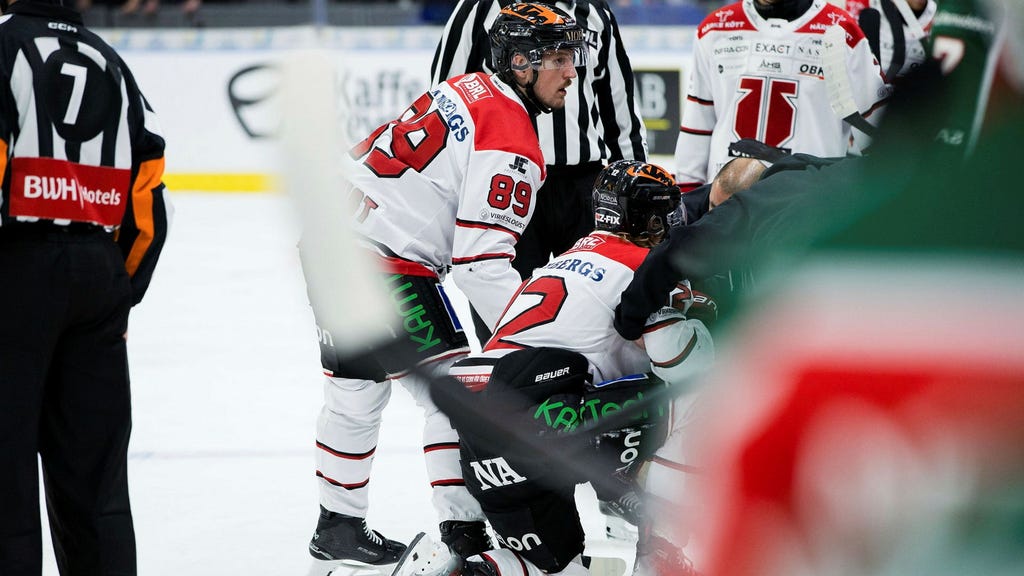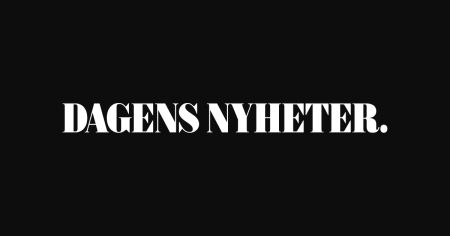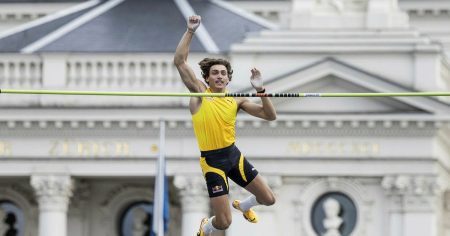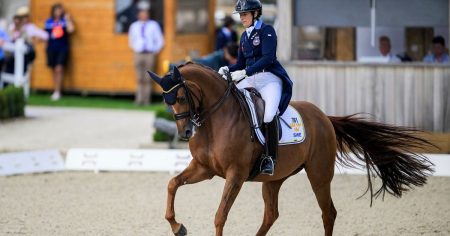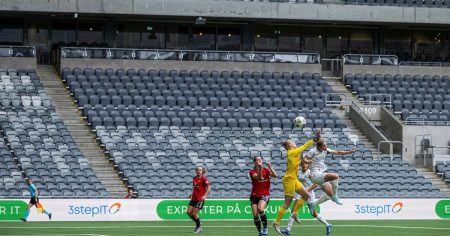The incident involving Örebro Hockey forward Noah Steen during a game against Frölunda HC was both unusual and alarming. Steen, while pursuing the puck, collided face-first with a television camera positioned near the boards, resulting in a frightening scene that immediately silenced the arena. The impact, which occurred at considerable speed, left Steen visibly dazed and bleeding, requiring immediate medical attention. The incident highlighted the inherent risks present in professional ice hockey, a high-contact sport where players regularly reach high speeds and operate in close proximity to the rink’s perimeter. While the placement of cameras and other equipment is carefully considered for safety, freak accidents like this underscore the unpredictable nature of the game.
The specific details of the collision remain somewhat unclear based on the provided information. However, it appears Steen was focused on the play and potentially unaware of the camera’s proximity as he chased the puck. This kind of tunnel vision is common in high-pressure sporting situations, where athletes prioritize tracking the game’s progress over peripheral awareness. The force of the impact suggests Steen was traveling at a significant velocity, making the collision with the rigid camera housing all the more dangerous. The immediate aftermath saw concerned teammates, opponents, and officials rushing to Steen’s aid as medical personnel quickly assessed the situation. The incident served as a stark reminder of the physical demands and potential hazards faced by professional hockey players.
The severity of Steen’s injuries was not immediately apparent following the collision. While the sight of blood understandably raised concerns, the extent of the damage required further medical evaluation. Facial injuries are particularly common in hockey, and collisions with hard surfaces can result in anything from cuts and bruises to more serious fractures or concussions. The medical team would have been primarily concerned with ruling out any significant head trauma, given the sensitive nature of such injuries and the potential for long-term consequences. The subsequent diagnosis and treatment plan would dictate the length of Steen’s absence from the ice and the necessary steps for his recovery.
The incident also raises questions about the positioning of cameras and other equipment around the rink. While broadcasting equipment is essential for capturing the game’s action and providing viewers with an immersive experience, player safety must remain paramount. League regulations and arena guidelines dictate the placement of cameras to minimize potential interference with gameplay and reduce the risk of accidents. However, this incident could prompt a review of existing protocols, potentially leading to adjustments in camera positioning or the implementation of additional safety measures. Striking the right balance between capturing the dynamic nature of hockey and ensuring player safety is a continuous process that requires ongoing assessment and adaptation.
Beyond the immediate concern for Steen’s well-being, the incident also had a palpable impact on the game itself. The sudden and unexpected nature of the collision understandably shook both teams, disrupting the flow of play and casting a somber mood over the arena. Such incidents serve as a sobering reminder of the inherent risks involved in professional sports, highlighting the vulnerability of athletes even within a highly regulated and structured environment. The emotional impact on players, coaches, and even spectators can be significant, underscoring the human element within the highly competitive world of professional hockey.
The incident involving Noah Steen’s collision with a television camera serves as a stark reminder of the inherent risks and unpredictable nature of professional ice hockey. While player safety is paramount and various precautions are in place, unforeseen accidents can and do occur. The specific details surrounding the collision, the extent of Steen’s injuries, and any subsequent changes to safety protocols will undoubtedly be subjects of ongoing discussion and review. This incident highlights the delicate balance between capturing the excitement and intensity of the sport while ensuring the well-being of the athletes who make it possible. The hope remains for Steen’s swift and complete recovery, allowing him to return to the ice and continue his career unimpeded by this unfortunate event.





